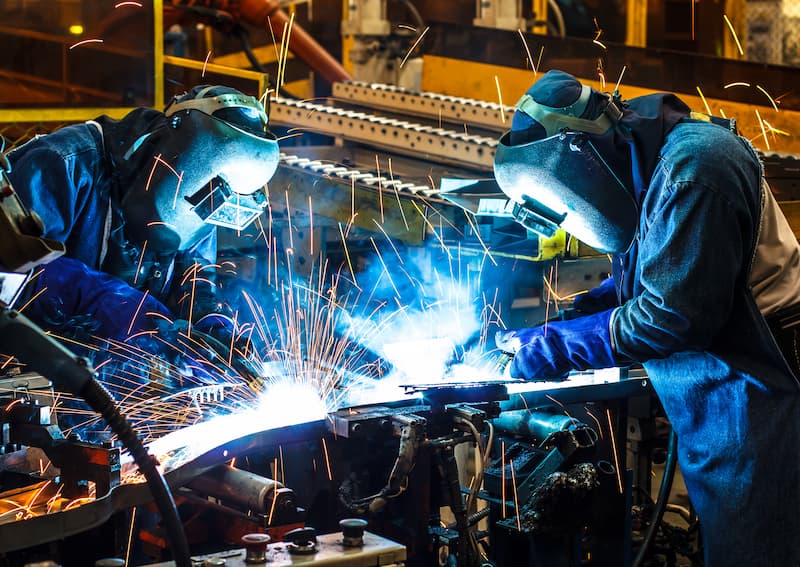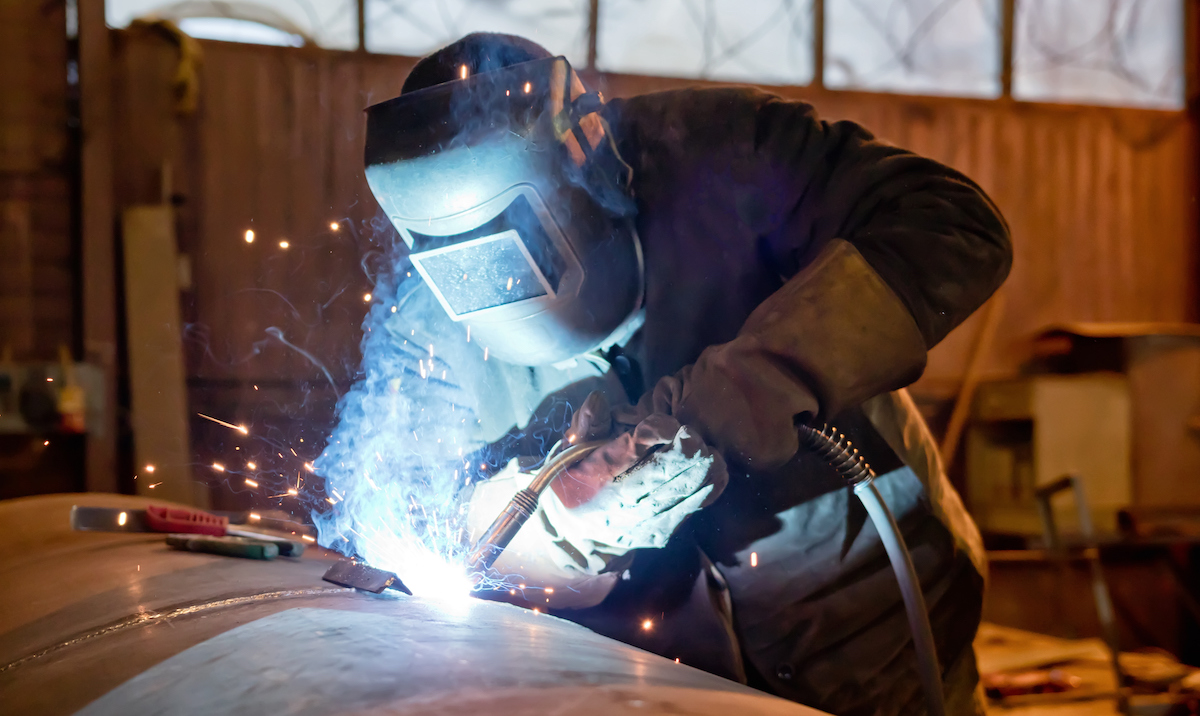How to achieve perfect fusion with Montana Mobile Welding and Repair Belgrade Fabrication
Wiki Article
Typical Welding Fixing Issues and Just How to Address Them Properly
Welding repair work usually come across a variety of issues that can endanger the integrity of the final item. Typical troubles consist of insufficient infiltration, porosity, and misalignment, to name a few. Each issue offers special difficulties that call for details methods for resolution. Understanding these concerns is vital for welders aiming to improve their outcomes and abilities. This conversation will discover these typical welding repair service concerns and reliable methods to address them.Insufficient Penetration
Insufficient infiltration occurs when the weld metal falls short to completely fuse with the base product, leading to weak joints and potential structural failures. This problem usually stems from inadequate warmth input, incorrect electrode angle, or inappropriate welding speed. Welders might run into insufficient infiltration due to a miscalculation of the essential criteria for a specific material density or kind. In addition, contamination on the base product's surface can prevent reliable bonding, intensifying the trouble. To attend to inadequate penetration, welders need to assure suitable setups on their tools and keep a tidy job surface. Routine inspection of welds is recommended to identify any kind of deficiencies early, enabling prompt modifications and the prevention of endangered structural honesty in welded settings up.Porosity
Porosity is a typical defect in bonded joints that shows up as small gas bubbles entraped within the weld steel. This flaw can jeopardize the honesty of the weld, leading to decreased toughness and prospective failure under tension. Montana Mobile Welding and Repair Welding. Porosity typically emerges from contamination, dampness, or inappropriate welding methods, which permit gases to get away into the liquified weld pool. To resolve porosity, welders ought to assure correct surface area prep work, maintain a clean working atmosphere, and utilize suitable welding criteria. In addition, choosing the best filler material and securing gas can minimize gas entrapment. Normal examination and testing of welds can help identify porosity early, ensuring prompt restorative actions are taken, thus maintaining the quality and reliability of the bonded structureMisalignment
Misalignment in welding can emerge from numerous elements, consisting of incorrect setup and thermal development. Understanding the origin is essential for effective resolution. A number of improvement techniques are offered to straighten parts and assure structural honesty.Sources of Misalignment
Welding misalignment often stems from a selection of underlying problems that can endanger structural stability. One main reason is improper fit-up of parts before welding, which can result in gaps and unequal surfaces. Variants in thermal development during the welding procedure can likewise cause distortion, especially if the products being signed up with have various coefficients of growth. In addition, poor fixturing and clamping might stop working to hold components securely in position, causing movement during welding. Badly kept equipment, including welding devices and tools, may present inconsistencies in the weld grain, further adding to misalignment. Finally, operator mistake, originating from inadequate training or experience, can additionally play a considerable function in developing misaligned welds.Modification Strategies Available
Resolving imbalance effectively requires a mix of rehabilitative methods customized to the specific problems handy. One typical technique is making use of fixtures or jigs to hold elements in the appropriate setting during welding, making sure consistent alignment. Furthermore, pre-heating the materials can aid lower distortion and boost fit-up. For substantial imbalance, mechanical realignment methods, such as using hydraulic jacks or clamps, can be used to fix the placement prior to welding. Post-weld warmth treatment might additionally be needed to eliminate stress and anxieties brought on by imbalance. Mindful examination and modification during the setup phase can avoid imbalance problems from coming to be considerable issues, promoting a smoother welding process and enhancing total structural integrity.Distortion
Distortion is an usual difficulty in welding that can occur from various elements, consisting of irregular heating & cooling. Comprehending the reasons of distortion is important for implementing efficient prevention strategies. Resolving this concern not just improves structural integrity but also enhances the total quality of the weld.Reasons for Distortion
When based on the intense warmth of welding, products usually undertake modifications that can lead to distortion. This sensation mainly develops from thermal expansion and contraction during the welding procedure. As the weld location warms up, the product increases; upon cooling, it contracts, which can produce internal tensions. Additionally, uneven heating across a work surface can aggravate these stresses, causing bending or bending. The sort of material also plays a considerable duty; metals with differing thermal conductivity and coefficients of expansion might react differently, resulting in unforeseeable distortions. Poor joint style and poor fixturing soldering copper wire can contribute to imbalance during welding, enhancing the esab warrior chance of distortion. Recognizing these reasons is necessary for effective welding repair and prevention strategies.Prevention Techniques
Efficient avoidance techniques for distortion throughout welding emphasis on managing heat input and making certain appropriate joint style. Keeping a regular warm input helps to decrease thermal expansion and tightening, which can result in distortion. Using methods such as pre-heating the work surface can additionally lower the temperature gradient, advertising consistent home heating. In addition, choosing ideal joint styles, such as T-joints or lap joints, can enhance security and reduce stress and anxiety concentrations. Executing proper fixturing to secure the workpieces in location better help in keeping alignment throughout the welding process. Ultimately, staggered welding series can distribute heat extra uniformly, avoiding localized distortion. By applying these approaches, welders can considerably lower the possibility of distortion and enhance the overall top quality of their welds.Splitting
Splitting is a typical problem come across in welding fixings, often arising from different factors such as improper air conditioning rates, product option, or poor joint preparation. The event of splits can significantly compromise the integrity of the weld, causing potential failings throughout procedure. To address this concern, welders have to first analyze the source, making certain that products are compatible and properly picked for the certain application. Additionally, managing the cooling price during the welding procedure is crucial; fast air conditioning can induce stress and bring about fracturing. Correct joint layout and preparation additionally contribute to lessening the danger. Executing these methods can boost weld top quality and durability, ultimately lowering the likelihood of breaking in ended up weldments.
Insufficient Fusion
A considerable issue in welding repair work is incomplete combination, which takes place when the weld steel does not sufficiently bond with the base product or previous weld passes - Fabrication. This issue can lead to weak points in the joint, potentially endangering the honesty of the welded framework. Factors adding to insufficient fusion include inadequate heat input, improper welding technique, and contamination of the surfaces being joined. To address this concern successfully, welders need to assure proper pre-weld cleansing and surface prep work, as well as change their welding criteria to achieve ample penetration and combination. Normal examination during the welding process can also assist identify insufficient blend early, enabling for timely restorative actions to boost the overall top quality of the weldOverheating
While welding repair work can boost architectural honesty, overheating provides a considerable obstacle that can cause material degradation. Excessive heat throughout welding can alter the mechanical residential properties of steels, leading to minimized toughness, boosted brittleness, and warping. This sensation is especially crucial in high-stress applications where architectural integrity copper welding is extremely important. Recognizing overheating can include visual assessments for discoloration or distortion, as well as keeping track of temperature during the welding process. To reduce the dangers associated with overheating, welders ought to utilize proper techniques, such as managing warmth input, readjusting travel rate, and making use of suitable filler materials. In addition, carrying out pre- and post-weld warm therapies can help restore product properties and boost the overall top quality of the repair work, making certain lasting performance and safety.Often Asked Questions
What Are the Usual Indications of a Welding Flaw?

Exactly How Can I Examine My Welds for High quality?
To test welds for top quality, one can make use of aesthetic evaluations, ultrasonic screening, and radiographic techniques. Each strategy ensures architectural honesty, recognizes issues, and validates adherence to defined criteria, inevitably enhancing the reliability of the welded joints.What Safety Safety Measures Should I Take While Welding?
When welding, one need to prioritize safety and security by wearing suitable personal protective equipment, guaranteeing appropriate air flow, securing flammable products away, maintaining a clean office, and being mindful of environments to stop crashes and injuries.Can I Repair a Weld Without Renovating the Entire Joint?
Repairing a weld without redesigning the whole joint is feasible, depending upon the damage (Montana Mobile Welding and Repair Belgrade Fabrication). Methods such as grinding, including filler product, or utilizing a welding process can effectively resolve particular flaws while protecting the bordering structureWhat Tools Are Necessary for Effective Welding Repairs?
Vital devices for reliable welding repair work include a welding equipment, cable brush, mill, safety equipment, clamps, and filler materials. Each device plays a vital role in ensuring quality and safety and security during the repair work process. Porosity commonly arises from contamination, wetness, or inappropriate welding strategies, which allow gases to run away into the molten weld pool. Badly maintained tools, including welding makers and devices, may present inconsistencies in the weld bead, more contributing to imbalance. When subjected to the intense warmth of welding, materials usually go through adjustments that can lead to distortion. Breaking is an usual problem come across in welding repair services, frequently resulting from various variables such as improper air conditioning rates, material selection, or inadequate joint preparation. A substantial issue in welding repairs is insufficient fusion, which takes place when the weld steel does not sufficiently bond with the base product or previous weld passes.Report this wiki page